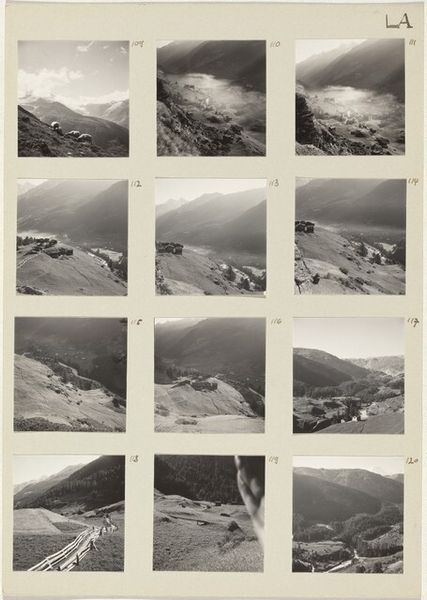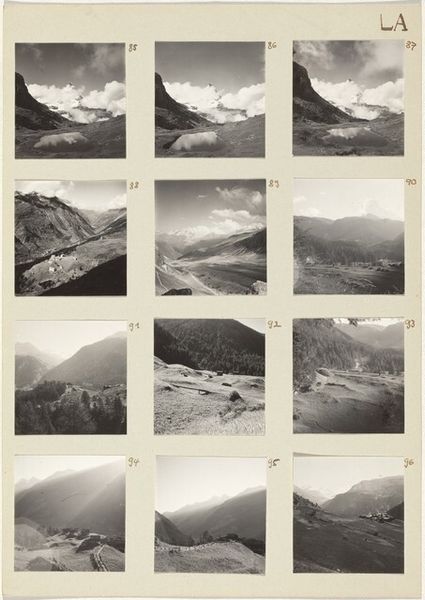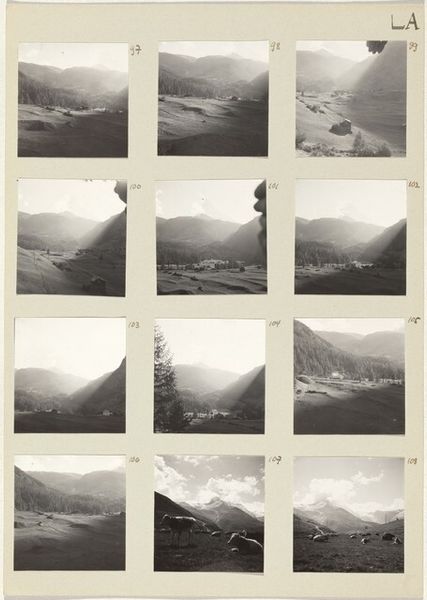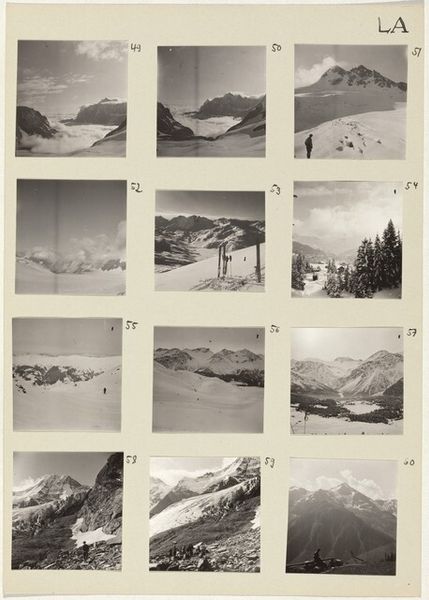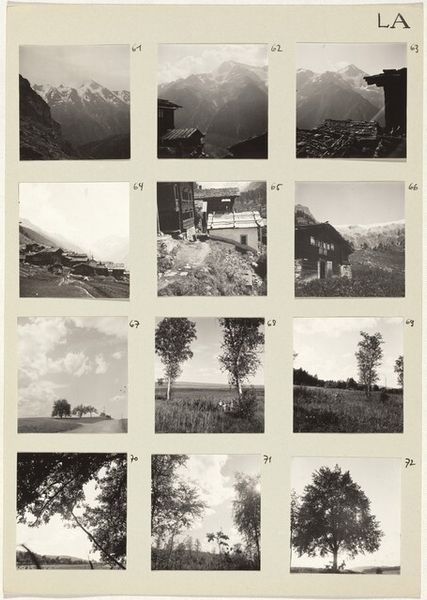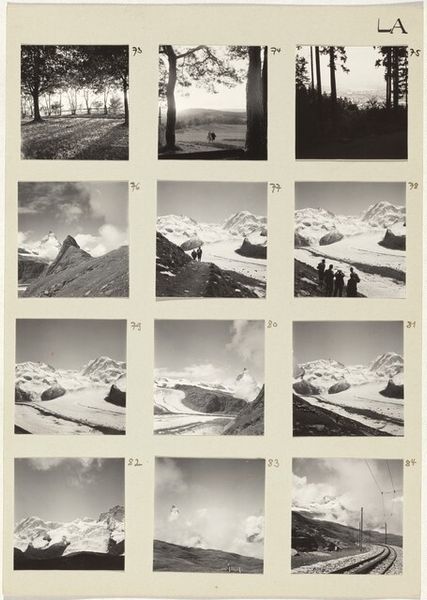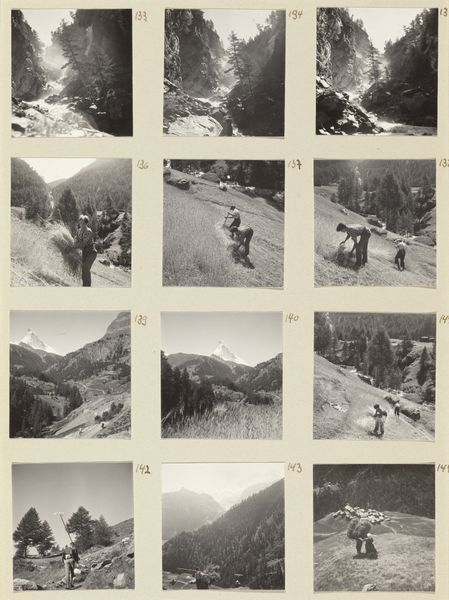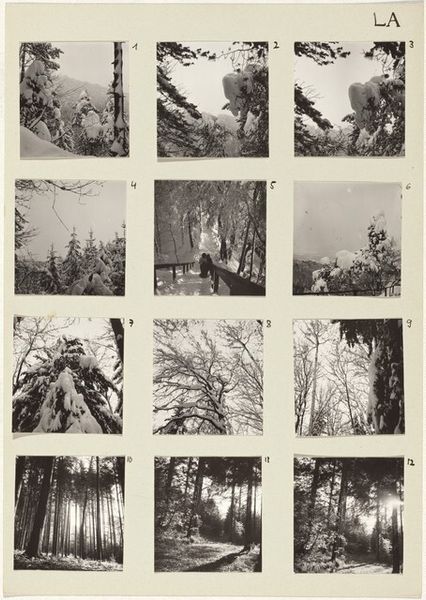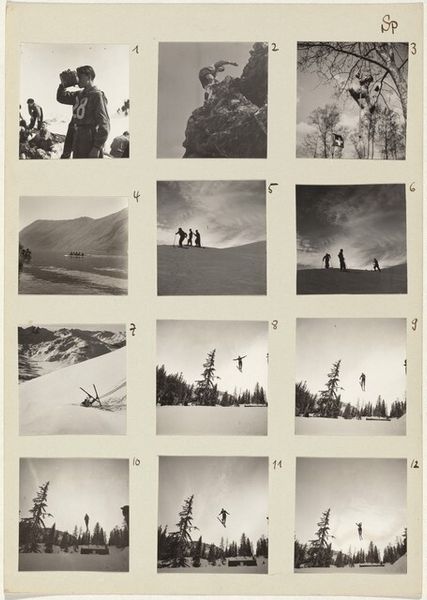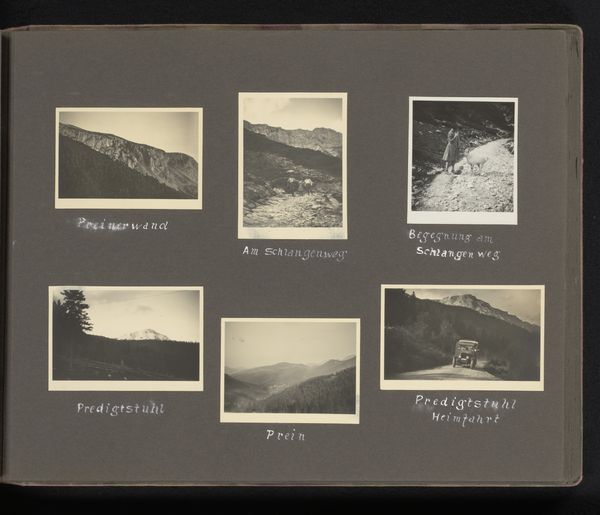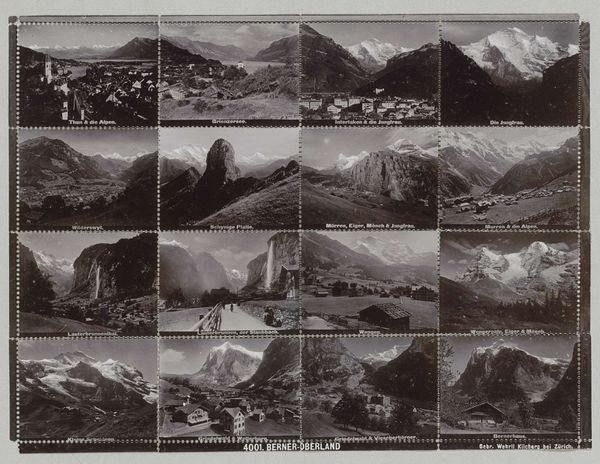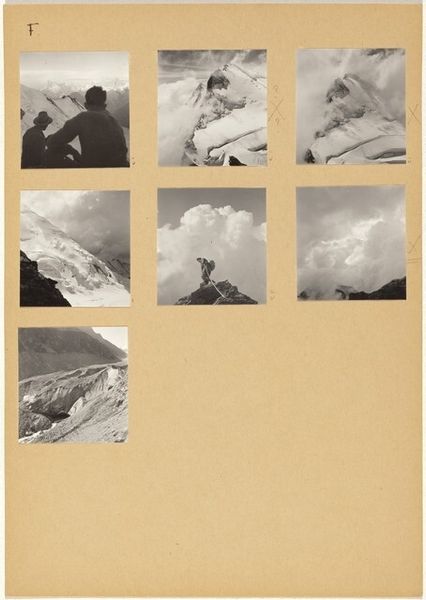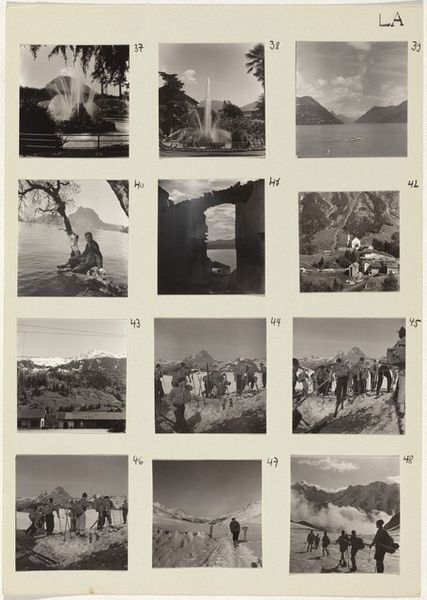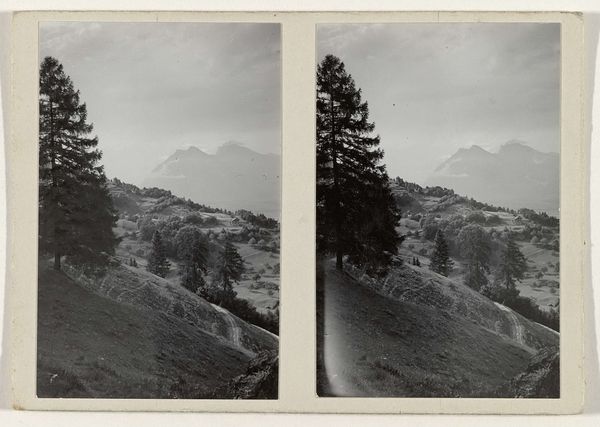
Dimensions: sheet: 29.6 x 21 cm (11 5/8 x 8 1/4 in.)
Copyright: National Gallery of Art: CC0 1.0
Curator: Let’s discuss Robert Frank’s "Die Landschaft (Landscape) 121-132", a gelatin silver print made between 1942 and 1946. It's a collection of smaller images, a bit like a photographic contact sheet. Editor: It has this incredible tonal range, almost ethereal. The light feels harsh, but the varying grays are quite soft. I am struck by the feeling of isolation created by the almost clinical cataloguing. Curator: Exactly. Frank created this landscape series within the historical and social context of post-World War II Europe, and his migration to Switzerland escaping persecution. The act of systematically documenting the Swiss landscape becomes an effort to negotiate and renegotiate home, belonging, and selfhood amidst displacement. Editor: The uniformity imposed by the photographic format – a rigid grid of landscapes – is an artificial framework of presentation, right? Given Frank's own experience, does this grid somehow become a representation of forced categorizations, of controlling and defining identity? It is almost dehumanizing in a way. Curator: Yes. Furthermore, the medium is fundamental to understanding this work. Gelatin silver printing, a widely accessible photographic process, makes this kind of documentation repeatable. Also, the lack of sharp focus across some panels may also imply the sense of trying to grab fleeting glimpses of the landscapes, giving a sense of the provisional and contingent. Editor: So it’s a conscious decision – challenging notions of traditional photographic precision. It is more in line with subjective encounters with nature instead, I suppose. Looking at the cascading water, it really feels the process reflects that instability, a struggle. Curator: It’s about revealing the constructed nature of place and identity – photography becoming the tool for constructing these unstable narratives. Editor: Absolutely. Seeing how the social conditions of post-war Europe intersect with Frank’s artistic process, especially his use of gelatin silver, offers fresh insights to this work and to his biography. It certainly has deepened my reading.
Comments
No comments
Be the first to comment and join the conversation on the ultimate creative platform.
